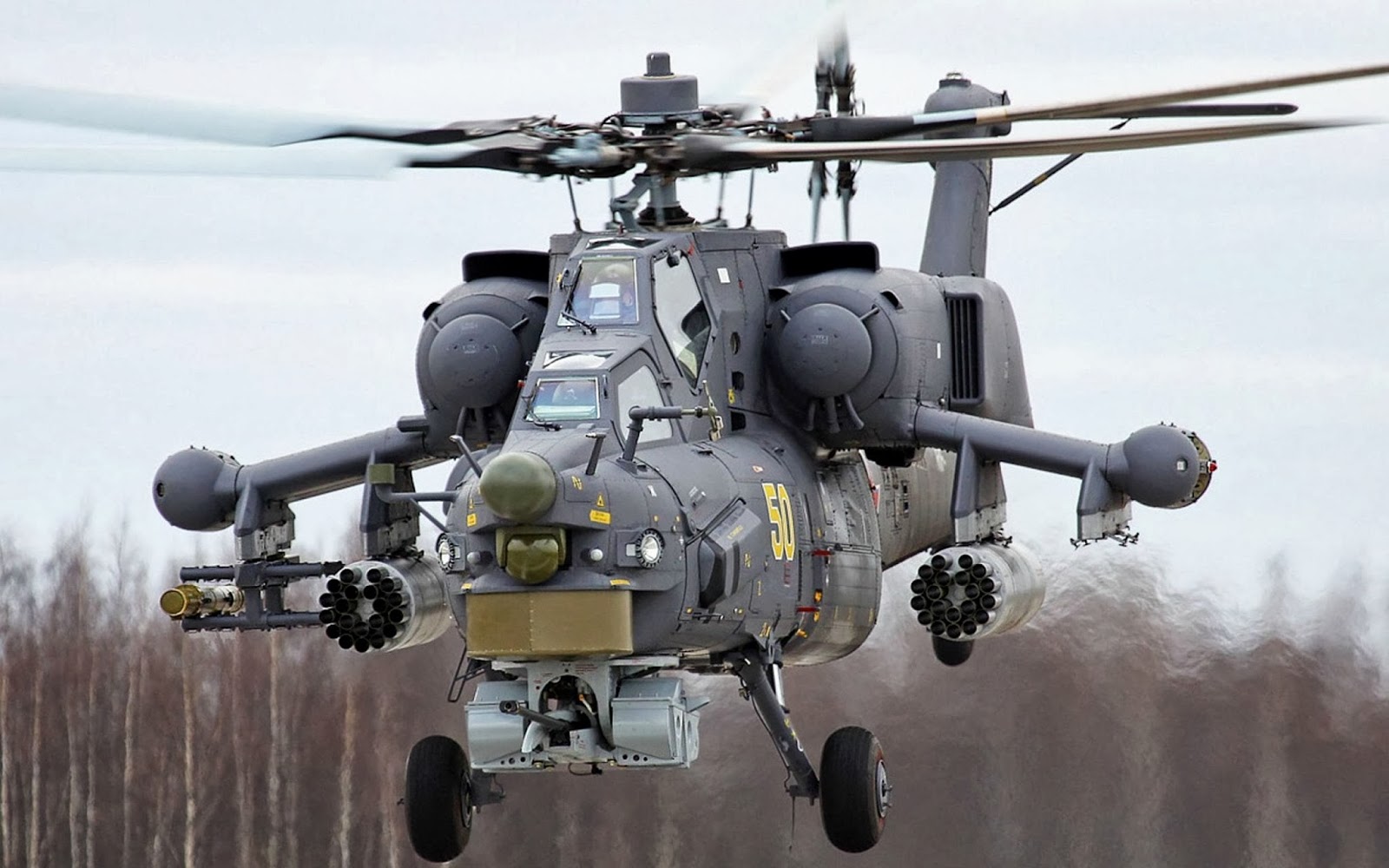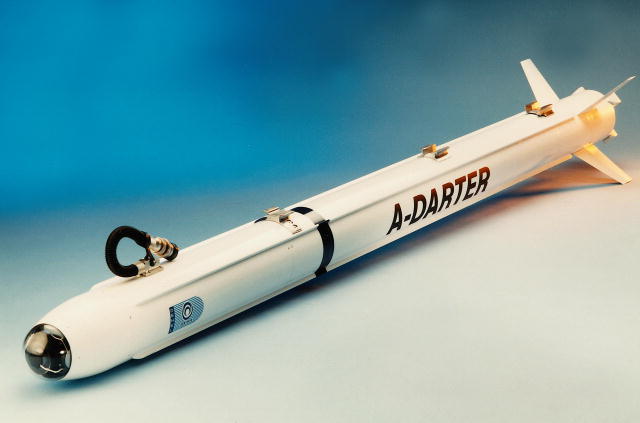The Sukhoi Su-34 (Russian: Сухой Су-34) (NATO reporting name: Fullback) also known as Su-27IB is a Russian twin-engined, twin-seat strike fighter.It is intended to replace the Sukhoi Su-24,has been developed by the Sukhoi Design Bureau Joint Stock Company in Moscow and the Novosibirsk Aircraft Production Association at Novosibirsk, Russia.
Su-34 (Su-32) Fullback Fighter Bomber, Russia
The Sukhoi Su-34 (Russian: Сухой Су-34) (NATO reporting name: Fullback) also known as Su-27IB is a Russian twin-engined, twin-seat strike fighter.It is intended to replace the Sukhoi Su-24,has been developed by the Sukhoi Design Bureau Joint Stock Company in Moscow and the Novosibirsk Aircraft Production Association at Novosibirsk, Russia.
Here goes the code of the element you want to show
A-Darter Air-to-Air Missile (AAM), South Africa
A-Darter, also known as V3E Agile Darter, is a fifth-generation short range, a modern short-range infrared homing ("heat seeking") air-to-air missile, featuring countermeasures resistance with a 180-degree look angle and 120-degrees per second track rate,under development by South Africa’s Denel Dynamics (formerly Kentron) and Brazil’s Mectron, Avibras and Opto Eletrônica.It will equip South African Air Force’s Saab JAS 39 Gripen C/D and BAe Hawk 120; Brazilian Air Force’s A-1M AMX, Northrop F-5BR and Gripen E/F.It is expected to be in production before the end of 2015.
Chengdu J-20 Multirole Stealth Fighter Aircraft, China
The Chengdu J-20 (simplified Chinese: 歼-20; traditional Chinese: 殲-20) is a stealth, twinjet, fifth-generation fighter aircraft prototype being developed by China's Chengdu Aerospace Corporation for the Air Force (PLAAF).Its Nato reporting name is Black Eagle.The J-20 made its first flight on 11 January 2011, and is expected to be operational in 2018.Two prototypes were developed in November 2010 for aerial and ground testing.
Potential customers of the J-20 are Pakistan, the Middle East, Latin America, South-East Asia and African countries.
The J-XX program was started in the late 1990s. A proposal from Chengdu Aerospace Corporation, designated Project 718, won the PLAAF endorsement following a 2008 competition against a Shenyang proposal that was larger than the J-20.
In 2009, a senior PLAAF official revealed that the first flight was expected in 2010–11, with an service entry date by 2019.
On 22 December 2010, the first J-20 prototype underwent high speed taxiing tests outside the Chengdu Aircraft Design Institute.
Ka-50 Black Shark (Hokum) Attack Helicopter, Russia
The Ka-50 Black Shark helicopter (Russian: Чёрная акула; Chornaya Akula, NATO reporting name: Hokum A) is a single-seat attack helicopter for destroying armored vehicles, slow-speed air targets and manpower on the battlefield.Coaxial Ka-50 helicopter has two three-blade rotors of 14.5-m diameter each. The polymeric composite blade is attached to the hub by a torsion bar. The airframe features perfect aerodynamic outlines, mid-set stub wing, retractable three-leg landing gear and empennage of a fixed-wing aircraft type. The pilot cockpit is fully armored.
Mil Mi-28 Havoc Combat Helicopter, Russia

The Mil Mi-28 (NATO reporting name "Havoc") is a Russian all-weather, day-night, military tandem, two-seat anti-armor attack helicopter. It is a dedicated attack helicopter with no intended secondary transport capability, better optimized than the Mil Mi-24 gunship for the role. It carries a single gun in an undernose barbette, plus external loads carried on pylons beneath stub wings.
First flown in November 1982, and designed to fulfil the same role as the American AH-64 Apache which it generally resembles, the agile Mi-28 'Havoc' military helicopter was scheduled to enter full service with the CIS forces in 1992, but lost out to the Kamov Ka-50. The three prototypes had a conventional three-bladed tail rotor but this has since been replaced by a 'delta 3' x-configured rotor comprising two independent two-bladed propellers mounted on the same shaft.
Tupolev Tu-160 Strategic Bomber, Russia
The Tupolev Tu-160 Beliy Lebed (or White Swan,Russian: Туполев Ту-160, NATO reporting name: Blackjack) is a supersonic, variable-sweep wing heavy strategic bomber designed by the Tupolev Design Bureau and engineering complex joint stock company of Moscow and the Kazan-Gorbunov Aircraft Production Association in Tatarstan from 1980 to 1992.
The maiden flight of the bomber was completed in December 1981 and it entered service in April 1987.
Buk-M2E Air Defence Missile System, Russia
The Buk-M2E (NATO name SA-17 Grizzly) is a Russian made mobile medium-range surface-to-air missile (SAM) system designed to defend field troops and logistical installations against air threats. SA-17 Grizzly is an upgraded version of the proven Buk-M1 mobile air defense system and retains its main features. It defeats strategic and tactical aircraft, tactical ballistic missiles, cruise missiles, air-launched missiles, guided aerial bombs and helicopters, including hovering rotorcraft, in the presence of heavy electronic countermeasures and under intense enemy fire. Moreover, it can be used against sea-surface and ground targets. The Buk-M2E SAM system includes combat elements, such as atarget-acquisition radar, a battle management station, self-propelled firing vehicles, an illumination and guidance radar, loader-launcher vehicles, surface-to-air guided missiles, as well as maintenance and repair facilities. The combat elements can be mounted either on tracked or wheeled chassis. Wheeled trucks carry the maintenance facilities. The Buk-M2 can engage a wide variety of targets from aircraft to missiles flying at an altitude of between 10 and 24,000 m out a maximum range of 50 km in given conditions. The SA-17 Grizzly can engage simultaneous of up to 24 targets flying from any direction.
Iron Dome Air Defence Missile System, Israel
The Iron Dome is an effective and innovative mobile defense solution for countering short range rockets and 155 mm artillery shell threats with ranges of up to 70 km in all weather conditions, including low clouds, rain, dust storms or fog. The Iron Dome is developed by the Israeli Defence Company Rafael. Development of Iron Dome began in January 2008, and is virtually complete after just two and a half years. The system uses a unique interceptor with a special warhead that detonates any target in the air within seconds. The Iron dome is a cost effective system that can handle multiple threats simultaneously and efficiently. The Iron Dome system has been selected by the Israeli Defense Ministry as the best system offering the most comprehensive defense solution against a wide range of threats in a relatively short development cycle and at low cost. The Iron Dome System, which is expected to provide defense to residents of Israel's South against rockets launched from the Gaza Strip, is entering into the final stages of performance testing and was even presented this week for the first time in an exhibition of technological weapons which was held at the Rabin military base. The Iron Dome system became operational in early 2011, initially deployed at air force bases in southern Israel. It will be set up in other areas, such as the town of Sderot, during significant escalations along the Gaza border.
Subscribe to:
Comments (Atom)
+(export+Su-32,+NATO+Fullback)+Russian+twin-seat+fighter-bomber+India+China+Iran+Syria.jpg)





